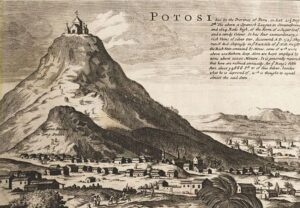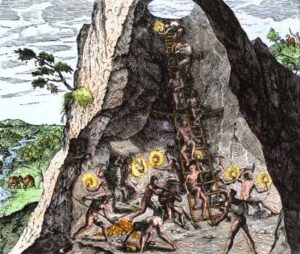In the heart of modern-day Bolivia lies a place shrouded in a dark past – the Potosi Silver Mine. Amidst breathtaking natural landscapes and rich mineral deposits, this mine stands as a solemn testament to the grueling conditions and exploitation experienced by countless indigenous workers during the Spanish colonial era. Unraveling the remnants of its history allows us to delve into a story of brutality, resilience, and the undeniable human cost of the quest for wealth.


The Magnificent Silver Mountain:
Located at an imposing elevation of 13,420 feet, the Potosi Silver Mine emerged as the largest silver deposit in the world, captivating the Spanish conquistadors who arrived on South American shores in the 16th century. With the discovery of this treasure, a full-scale exploitation operation unfolded, affecting both the land and its inhabitants for centuries to come.
Exploitation and Inhumane Conditions:
During the Spanish colonial era, indigenous people were forcibly recruited and sold into labor in the Potosi Silver Mine. These workers, known as “mitas,” faced backbreaking physical labor under oppressive conditions. The mitas were subjected to hazardous mining practices, inadequate protective gear, and exposure to toxic substances such as mercury. In the dimly lit and oxygen-deprived tunnels, they toiled tirelessly in search of the coveted silver ore.
Cerro Rico: The Rich Hill:
As the mine developed and centuries passed, Cerro Rico, or “The Rich Hill,” gained an ominous reputation. An estimated eight million indigenous mine workers lost their lives in the pursuit of silver. Harsh conditions led to lung diseases, cave-ins, and accidents from loose rock. The mortality rate was so high that the hill became known as “the mountain that eats men.”
The Mit’a System:
To maintain a continuous supply of labor, the Spanish implemented the mit’a system, a form of forced labor. Indigenous communities were required to send a specific quota of individuals to work in the mine, often separating families and disrupting traditional ways of life. This system of exploitation further exacerbated the suffering of the indigenous population.
Legacy and Impact:
The horrors experienced by the workers in the Potosi Silver Mine during the Spanish colonial era undeniably shaped Bolivia’s history. The immense wealth extracted from the mine funded Spain’s empire-building endeavors while subjecting indigenous people to unimaginable suffering. This exploitation not only resulted in the loss of countless lives but also left deep-rooted social and economic inequalities that persist to this day.
Preserving the Past: A Glimpse into Present-Day Potosi:
Today, Potosi stands as a haunting reminder of the mine’s dark history. The Bolivian government, international organizations, and local communities are working together to preserve the site and honor the memory of those who suffered. Museums, tours, and educational initiatives aim to create awareness and understanding of the mine’s past, transforming it into an opportunity to learn from our collective history and ensure such exploitation is not repeated.
Conclusion:
The story of the Potosi Silver Mine is a stark reminder of the human cost behind the pursuit of wealth and power. It reveals a dark chapter in Bolivia’s history when indigenous peoples endured untold suffering and exploitation. By shedding light on these historical atrocities, we acknowledge the importance of looking back and understanding the consequences of our actions. Let us ensure such ordeals remain firmly in the past as we strive for a more just and equitable future.

